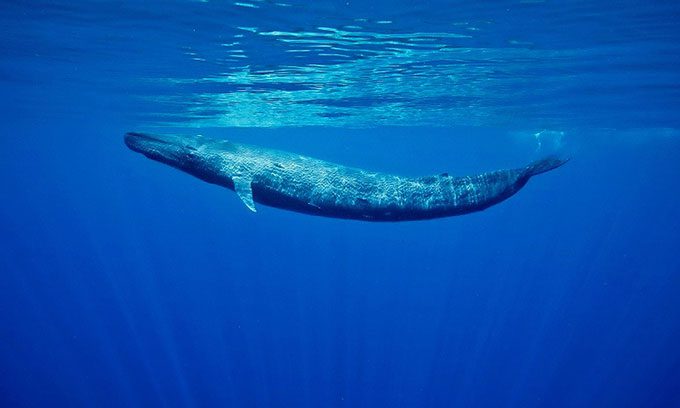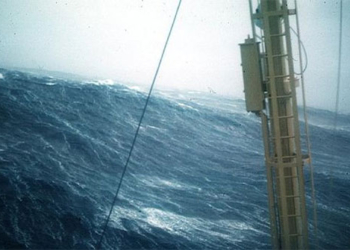Based on audio data from underwater detectors, scientists have identified a new population of blue whales in the Indian Ocean.
Blue whales are the largest animals on the planet, but they are also among the most elusive species. Not only are they rare, but they also lead a reclusive life in nature, with their distribution spanning across the world’s oceans.

Pygmy blue whales are the smallest subspecies of blue whales. (Photo: Cairo Scene).
In a recent study published in the journal Science Reports, biologists led by the University of New South Wales (UNSW) in Australia reported that they have discovered an entirely new population of blue whales right in the middle of the Indian Ocean. This discovery was made possible through audio data collected by the Comprehensive Nuclear-Test-Ban Treaty Organization (CTBTO), which monitors international nuclear bomb tests.
Since 2002, the CTBTO has utilized advanced underwater detectors to capture acoustic waves from potential nuclear bomb tests. The recordings—which include a variety of detailed ocean sounds—provide valuable research data for marine scientists.
Blue whales are famous for their deep, resonant songs that carry far and are easily distinguishable, making them advantageous for tracking and research. Each whale population has its own unique “song” to identify members of the pod.
In a detailed analysis of the components such as structure, frequency, and rhythm of the new song, the research team realized that it belongs to pygmy blue whales, one of the four recognized subspecies of blue whales.
“It is unclear how many individuals are in this group, but the number is quite large because we heard many sounds,” said Professor Tracey Rogers from UNSW, the lead author of the study.
This discovery is of great significance for marine conservation, as blue whales have been pushed to the brink of extinction due to overhunting in the 20th century. Unlike many other whale species in the Southern Hemisphere, the population of blue whales has yet to recover.
Pygmy blue whales (Balaenoptera musculus brevicauda) are the smallest surviving subspecies of blue whales. They rarely exceed 24 meters in length, while the other three subspecies—B. m. musculus, B. m. intermedia, and B. m. indica—can grow up to 28 to 30 meters.





















































